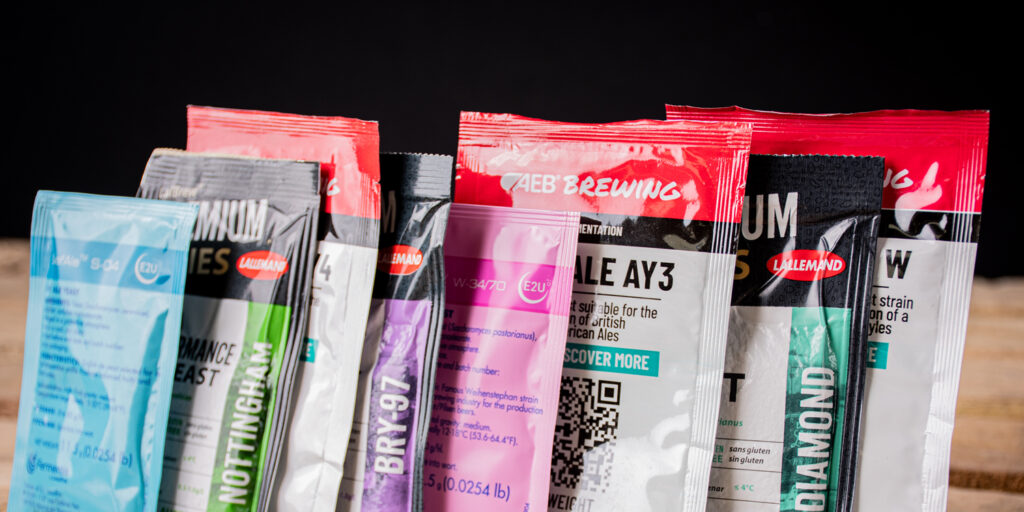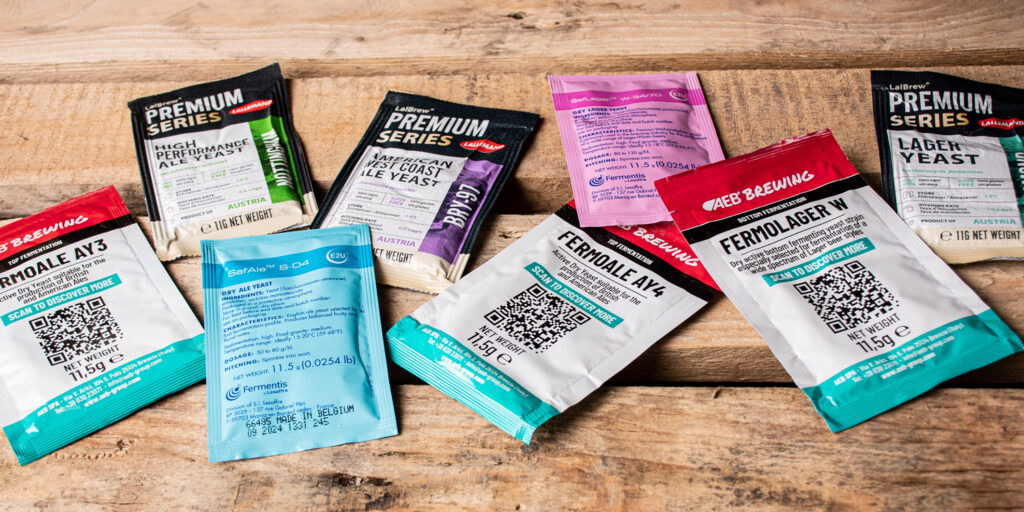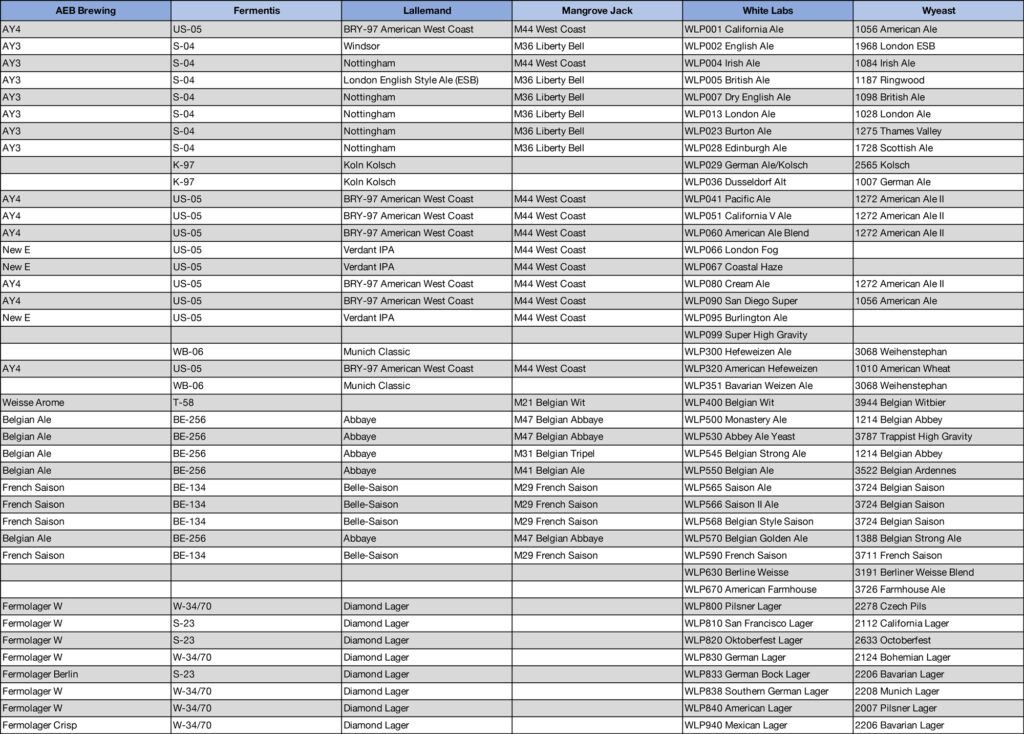Yeast Substitution in Brewing Beer: How to Choose the Right Yeast for Your Beer

Brewing yeast is an essential ingredient for producing a delicious beer. Choosing the correct type of yeast can be the difference between an average beer and a fantastic one. This blog post will discuss the importance of yeast substitution in brewing beer. As well as some tips on choosing the right yeast for your beer. Read on to learn more about yeast substitution and how to ensure you get the perfect beer every time.
The Different Types of Yeast
When it comes to brewing beer, there are two main types of yeast. Domesticated yeasts, also known as brewing yeasts and wild yeasts. Domesticated yeasts are the most commonly used type and come in both ale (top-fermenting) yeast and lager (bottom-fermenting) yeast.
Ale yeast is a top-fermenting yeast that ferments at warmer temperatures. It is used to make ales, stouts, porters, and other speciality beers. It has a shorter fermentation time. This can provide a variety of complex flavours and aromas due to the by-products produced during fermentation. Ale yeasts typically have a higher attenuation rate. This means that more sugar in the wort will be converted into alcohol, resulting in a drier beer. They also have a higher flocculation rate. They will clump together more easily after fermentation, making them easier to filter out. The optimal fermentation temperature for ale yeasts is between 15-20°C (59-68°F).
Common ale strains include American, Belgian, British, and Belgian Lambic/Sour Ale. Popular brands of ale yeast include Fermentis, Lallemand, Brewferm, Wyeast, AEB Brewing, Mangrove Jacks, White Labs & Wyeast Liquid Yeast.
The Pros and Cons of Each Type of Yeast
When it comes to yeast for brewing beer, there are two main types – dry and liquid. Both have advantages and disadvantages, and when deciding on yeast, it’s crucial to weigh all the factors.
Dry yeast has a longer shelf life than liquid yeast and usually contains more strain types. It is not a live culture, and it may take a bit longer to get going. This also means that it is more cost-effective and not as perishable. Dry yeast typically has more cells per pack. Which is especially helpful when making a beer with a gravity above 1.060 or any lager. Brands such as Mangrove Jacks and AEB Brewing offer high-quality dry yeasts.
Liquid yeast is a live culture, making it much more perishable and expensive than dry yeast. However, since it is a live culture, it will start working faster than dry yeast and is generally considered more flavorful. On the other hand, most liquid yeasts contain fewer cells per pack than dry yeasts. So when making a beer with a gravity above 1.060 (or when making any lager), the yeast should ideally be “grown” by making a yeast starter before brewing day. White Labs is one popular brand of liquid yeast used in brewing beer.
There was once a thought that liquid yeast produced a superior beer, but that is no longer the case. Dry Yeast is actually the preferred yeast in most breweries due to its long self life and consistent results.
Both types of yeast have their pros and cons. But weighing these up will help you choose a suitable yeast.

How to Choose the Right Yeast for Your Beer?
Choosing the right yeast for your beer can seem daunting, but it doesn’t have to be. You can choose a yeast strain by name and read more about its characteristics. Some popular yeast strains include Fermentis US-05, Lallemand BRY 97, Mangrove Jack’s M44 US West Coast, White Labs California Ale (WLP001), and AEB Brewing Clean Ale AY4.
When deciding on yeast, there are several essential things to consider, including attenuation, flocculation, and alcohol tolerance.
Attenuation
Attenuation is the percentage of sugar that the yeast can convert into alcohol. The amount will be shown as a percentage or as high, medium or low.
- High Attenuation: 79% and higher
- Medium Attenuation: 73 to 77%
- Low Attenuation: 72% and lower
If you have 75% Attenuation, 75% of the sugars in your wort will be converted into alcohol. A yeast with low attenuation will leave a brew with more sugar and body than a yeast with high attenuation.
Example: If your brew has an OG of 1.050 and you have 75% attenuation. The yeast will ferment 75% of the gravity sample. 75% of 50 gravity points is about 38 gravity points. So your final gravity should be about 1.012 ( 50 – 38 = 12). This will give you about 4.99% ABV. (OG – FG) x 131.25 = ABV
Flocculation
This refers to the clumping of yeast cells into clusters. These clumps are called flocs. This typically happens at the end of fermentation. The flocculation rate will determine how fast the beer will clear. High flocculating yeasts sink to the bottom of the fermenter quicker and produce clearer beers.
Alcohol Tolerance
This is the amount of alcohol the yeast can tolerate before becoming inactive. As the alcohol increases, the yeast becomes more dormant and stops fermenting. The more alcohol the yeast can handle, the higher percentage of ABV you’ll get in the final brew.
- Low: 5% and lower
- Medium-Low: 4-8%
- Medium: 5-10%
- Medium-High: 8-12%
- High: 10-15%
- Very High: 15% and higher
Optimal Temperature Ranges
This is a range of temperatures a strain of yeast is at its happiest. Keeping your temperature in this range will ensure your yeast ferments optimally. If the temperature is too low, fermentation will be slow or not start at all. Too high, you might get off-flavours and possibly need to dump the whole brew.
Flavour Profile
Defining a yeast flavour profile is difficult, and it takes some guesswork. When yeast is said to impart “fruitiness”, it will add esters that taste like fruit. Usually, the higher temperature you ferment at, the more these flavours will be present. Yeasts can transform the final flavour of your beer. They can emphasise your beer’s malt or hop profiles or add fruity, sweet, or dry finishes.
You can confidently choose the right yeast for your beer by considering each factor. Checkout the GEB Yeast Substitution Table below or click HERE to see it on our website.
